The NZXT Kraken Z63 & X73 AIO Cooler Review: Shiny On Top, Solid Underneath
by E. Fylladitakis on August 19, 2020 11:00 AM EST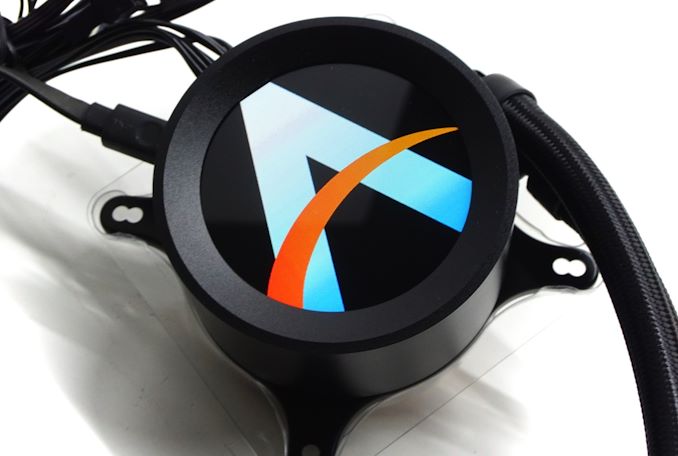
Ever since it was founded back in 2004, NZXT has been focused on the always-lucrative PC gaming market. The company started out with just a few PC cases, yet their unique aesthetics and features were more than enough to let the company establish a solid foothold in the advanced PC market. Several years later, NZXT slowly began diversifying their product portfolio by adding cooling and power products to it. Today, the company produces a large variety of PC cases, cooling, and power products, as well as PC peripherals and accessories.
NZXT entered the PC cooling market nearly a decade ago by releasing all-in-one (AIO) liquid cooling solutions and accessories for them, including GPU mounting brackets. However unlike other manufacturers who have opted to build large, diverse product lineups, NZXT never kept more than a handful of AIO coolers available in their product line-up. Instead, the company has focused on delivering a few quality and aesthetically-unique designs, rather than trying to take the competition down on raw performance alone.
Today we are taking a look at NZXT’s latest liquid coolers, the Kraken X-3 and Z-3 series. These are more of a refresh rather a total upgrade over last year’s X-2 series, but NZXT has made some notable tweaks. Between the two families there are five different coolers in three sizes, covering the usual 240/280/360mm configurations. Both the X and Z series utilize the same cooling hardware, but NZXT has positioned the Z series as a premium option with a novel aesthetic feature – while the X series has RGB lighting on top of the pump base, the Z series tops its base with a full-fledged (and full color) LCD screen.
For this review we're checking out both the X73 and the Z63, giving us a full view of the performance and features we can expect from most coolers that NZXT currently offers.
| NZXT Kraken Z-3 and X-3 Series | ||
| Fan Configuration | X Series | Z Series |
|
2x 120 mm |
X53 ($130) |
- |
|
2x 140 mm |
X63 ($150) |
Z63 ($250) |
|
3x 120 mm |
X73 ($180) |
Z73 ($280) |
Packaging & Bundle
The new Kraken Z-3 and X-3 coolers ship in relatively simple packaging, based on the same white/purple artistic theme that NZXT has used over the last few years. A picture of the cooler covers the otherwise plain front of the packaging. Inside the box we found the coolers and their parts well protected by custom cardboard inserts.
All of the coolers share practically the same bundle, which is limited to the basics. Inside the box we only found the required mounting hardware, the necessary wiring, and an installation manual. We should also note that NZXT does not include the TR4 socket mounting plate by default, but they do have one available as an optional part for Threadripper owners.
The NZXT Z63 and X73 come with two 140 mm and three 120 mm fans respectively. The company went with high quality fans, with fluid dynamic bearing (FDB) engines and anti-vibration mounting pads. They are not overly powerful, though with their flat-bladed, high-pressure design they shouldn't have much trouble overcoming the resistance of the radiator. There is no lighting about the fans, with the company focusing their artistic enhancement efforts on the pump block instead.
The NZXT Z63 & X73 AIO Coolers
Digging into our review samples, let's start with deciphering NZXT’s cooler names. The first character denotes the series, the second the size, and the third is the version. For example, the Z63 and the Z73 coolers belong to the same series and share most features but their radiator size differs, while the X73 and Z73 are of the same size but belong to different series. Thus the Z63 and the X73 that we will be reviewing today check both of these boxes, allowing us to explore the differences between the Z and X series and measure the thermal performance of both the 280 mm and the 360 mm coolers.
So what sets apart NZXT's X and Z series coolers? In short, it's all about displays. For the Z series, NZXT has topped off the the main block assembly with a 2.36” LCD screen. The LCD can be programmed to showcase everything from images and GIFs to real-time data. And despite the low 320×320 px resolution, it is crisp and bright, with beautiful color reproduction.
Otherwise for the X model, NZXT dials things back just a tad and uses a mirrored top with LEDs placed under it. Once powered, the company logo and a ring appear, with the mirror creating an infinity effect about the ring. The LEDs are RGB and users can adjust the colors of the ring using NZXT’s CAM software. On the whole it is a relatively simple and attractive visual setup.
Other than the display topping the main block, the X and Z series coolers are all but identical. The rest of the main block is the same between the two, going right down to the contact plate and mini pumps. So at the base of NZXT's LCD and LED handiwork lies a circular copper plate, secured on the plastic body with eight stainless steel screws. A layer of thermal paste is pre-applied onto the contact plate. It is not machined down to a mirror finish but it is smooth and entirely flat. The contact plate is not large enough to cover Ryzen Threadripper processors and, although it should work okay, we generally advise against using coolers that are not specifically developed for the TR4 socket on Threadripper processors.
Moving on, let's talk about NZXT's radiators. Their different sizes aside, the radiators of both the Z63 and X73 seem to be identical in terms of design. The subtle but significant difference is that the 120 mm fan radiator of the X73/Z73 is 26 mm thick, while the 140 mm fan radiator of the Z63/X63 is 30 mm thick. It's just a few millimeters, but it's something that should absolutely be considered confirming the cooler’s compatibility with a given case, as sometimes a few millimeters makes all the difference. Both radiators are typical dual-pass cross-flow designs, with tiny fins soldered on thin oblong tubes. This is by far the most dominant radiator design for AIO systems and rightfully so, as it offers the best efficiency within limited proportions and for the temperature differences that AIO coolers have to deal with.
The hose fixings on the radiator side are immovable, making them a bit less flexible during installation. In order to cope with long-term evaporation losses, NZXT is using what they are calling “ultra-low evaporation” high-density rubber tubing, with external nylon sleeve braiding for additional mechanical protection. NZXT also took the time to punch the company logo on the sides of the radiators.



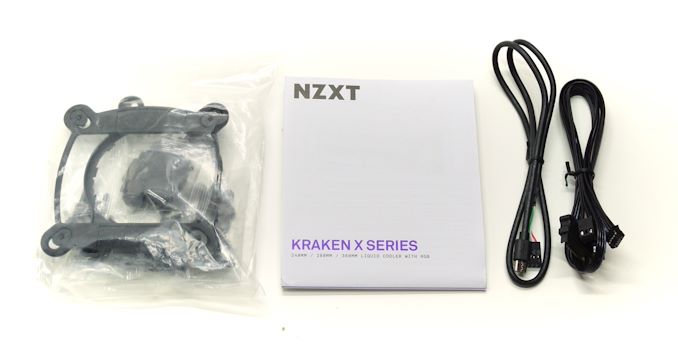
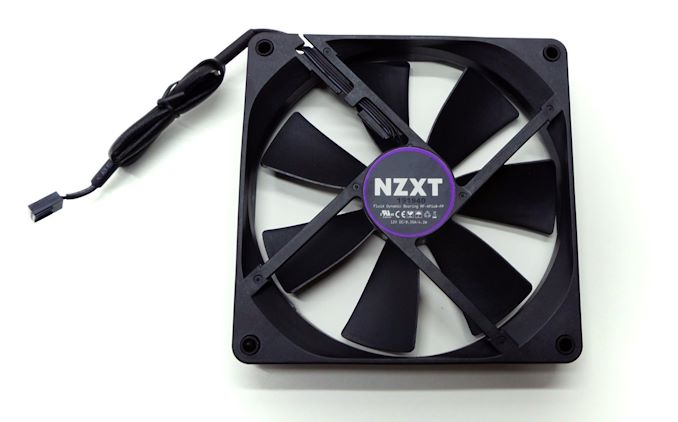
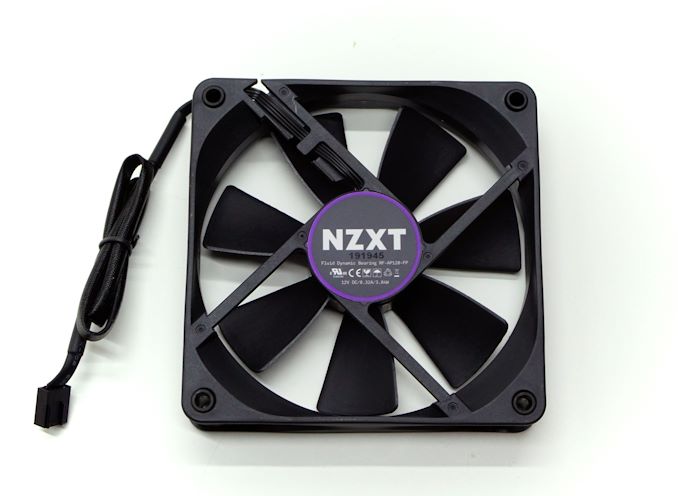
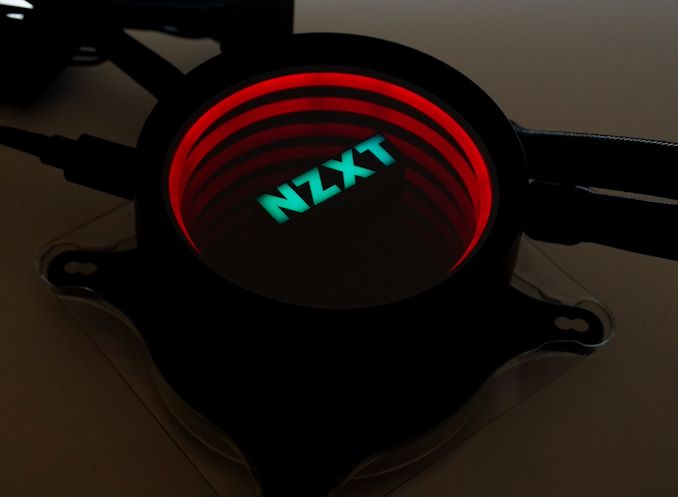
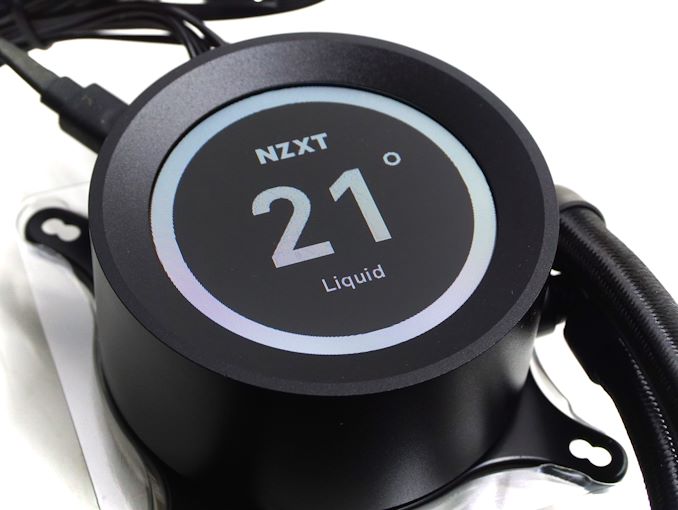
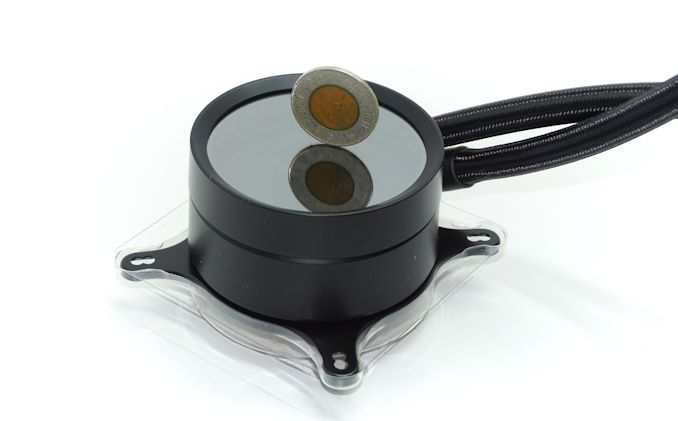
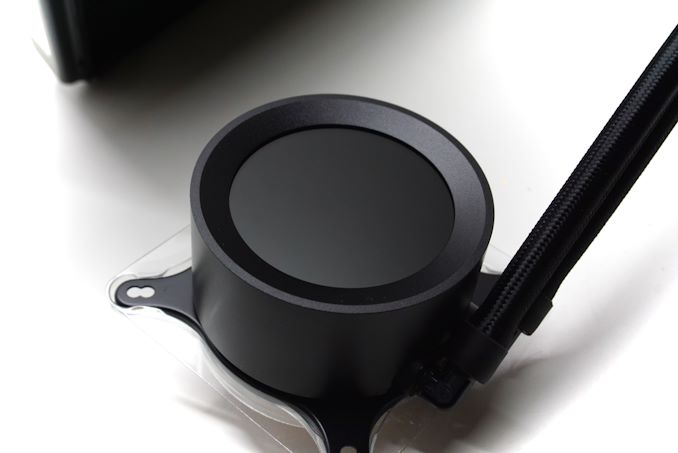
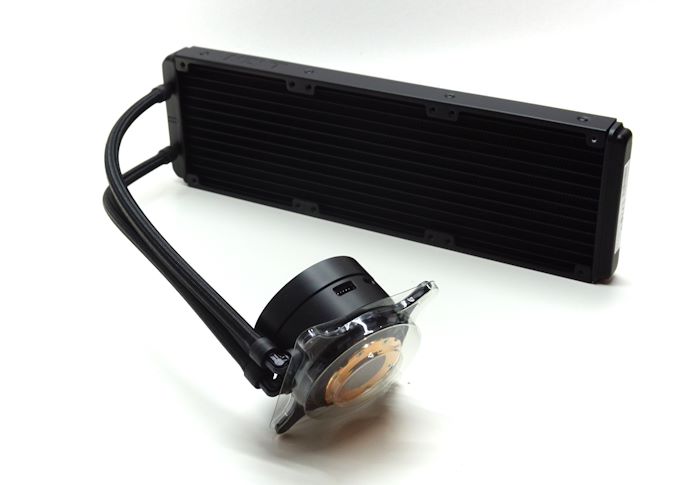
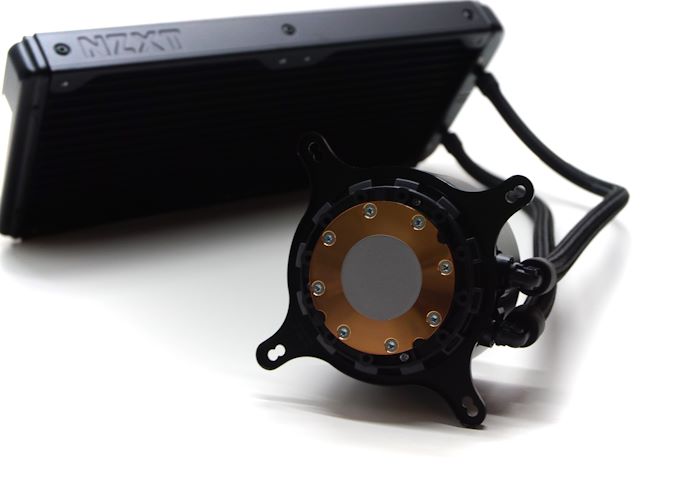
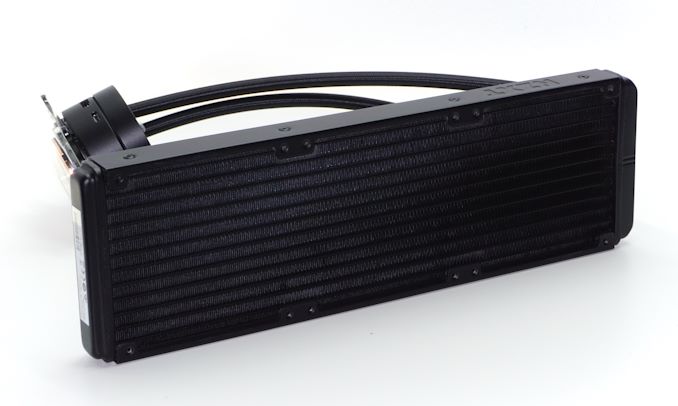
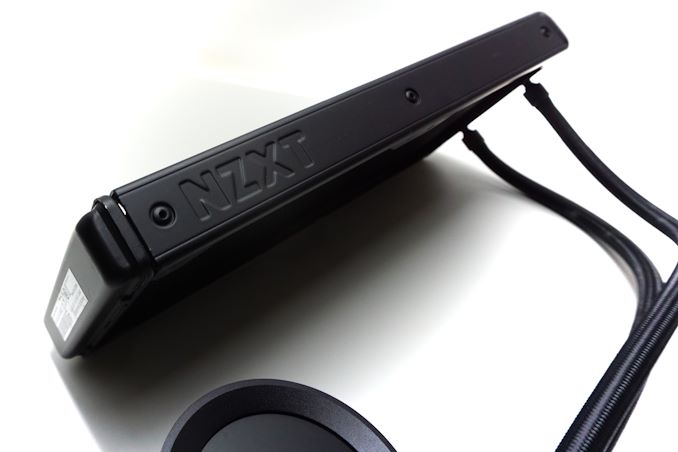









61 Comments
View All Comments
Foeketijn - Thursday, August 20, 2020 - link
As long as they keep using aluminium fins, my feeling is, they do not take their customers seriously. It's just a couple of grams extra weight and maybe a buck higher BOM. But it would make it stand out between the competitors. And still nobody bothers. Except Swiftech a long time ago (but got burned by some patent infringement) and some other small player that never came available (EWK maybe?)Guspaz - Thursday, August 20, 2020 - link
Aluminum fins as opposed to what, copper? Copper is expensive and heavy, and should be used sparingly where it can make the most difference.Freakie - Thursday, August 20, 2020 - link
I recently went shopping for a AIO and stayed faaaaar away from NZXT for a few reasons. First, no ARGB fans for their already high price. If you want ARGB fans, you have to buy separate ones adding to the already high cost compared to everything else in the market. Second, their connectors for their ARGB (on the waterblock) is proprietary and if you want to convert them to a non-proprietary connector so that you don't have to use (and BUY) NZXT's proprietary ARGB controller, you have to pay at least $15 to get a special converter to do so.You wind up spending $80 more to get the same experience as other products and it's just ridiculous. And of course their CAM software has it's own host of problems. Every time GN gets an NZXT review unit, they update on the latest on CAM's woes.
back2future - Saturday, August 22, 2020 - link
thx for words of wisdom, (o)fme it should be said, that there is (generally spoken) a difference between trust and support. Technically, if a cooling system for cpu was at high cost only to enhance for chipset or gpu cooling, there's not that much reason advertising this to mass markets (for liquid cooling enthusiasts)?(btw for common knowledge: Some 'new' (destructive to freedom) www attitudes appearing in some fields?
fast examples selected randomly:
"We care about your privacy"
"Non-precise means only an approximate location involving at least a radius of 500 meters is permitted."
or
"To measure content performance vendors can:
* Measure and report on how content was delivered to and interacted with by users.")
hubick - Thursday, August 20, 2020 - link
I have an X73 for my 3960X in a Define 7 case. The stock fans were nice and quiet, but I didn't feel pushed enough air when flat out at 100%, so I replaced them with six Corsair ML120's in push+pull, blowing out the front of the case (have 240mm AIO GPU up top). My 3960X, nailed at 100% in Aida64 long term, settles at 84 degrees Celsius (motherboard temp, package bounces around about 10 degrees higher). It feels like the round cooling plate only covers about 60-70% of the Threadripper - which I read supposedly doesn't matter that much, but yeah.KorbenD - Friday, August 21, 2020 - link
If the CAM software wasnt's so bad... It runs 9 processes to monitor, uses over 1GB of RAM. And it causes systems to freeze randomly (had now 5 other people replying to me that they had the same symptoms). Never a NZXT product that requires CAM, never again.silencer12 - Friday, August 21, 2020 - link
I think there are other unofficial cam alternatives. There was some developer who made software in python which can monitor nzxt liquid cooling.silencer12 - Friday, August 21, 2020 - link
I forget the name of it though. I found out about it last yearTom Sunday - Saturday, August 22, 2020 - link
I just had my all new super PC purchase including a CDROM and with a high quality 'Thermaltake Gravity' cooler build by a local strip-center shop for under $850. Money for the man on the street is tight and I can't afford to play games.They said that AIO water-cooler purchases only applies to less than 15% of all customers and that less than 2% of them are actually attempting to overclocking their PC's! Moreover that 80% of AIO purchasers have been let to believe (or scared) into that AIO's is the only right answer. Perhaps marketing and ultra high profit margins at work? Furthermore that the total motherboard market represents up to 90% of mainstream boards actually purchased ($90-$120) and which generally do not overclock. I am not good with numbers and marketing and many other things so what do I know? But listening to the geek-team from Bangladesh I inherently know something is not cool!seamonkey79 - Sunday, August 23, 2020 - link
This is as stupid as that $300 B550 board.